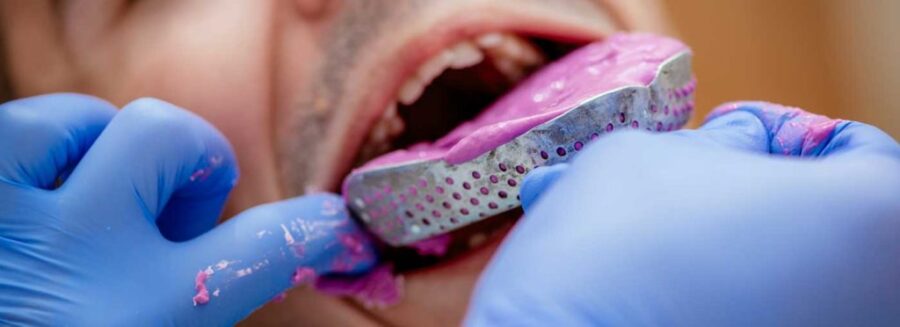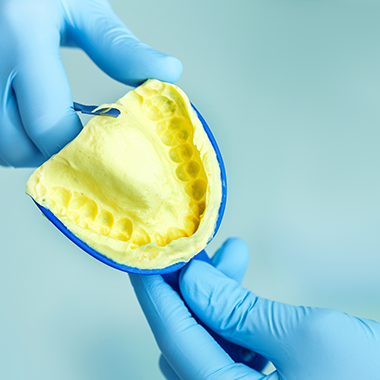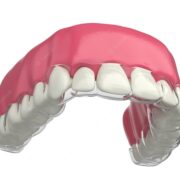They are an integral part of dentistry, and they play an important role in providing accurate treatment. Whether you are a dental professional or a patient, understanding the basics of impressions is essential. Taking an impression is a meticulous process, and it involves a variety of techniques and materials. In this article, we’ll review the basics of impressions in dentistry, including the different types of them, how they are made, and when they should be used. We’ll also look at the importance of accurate impressions and how they can help provide the best possible treatment.
What is a Dental Impression?
An impression in dentistry is a cast of a human oral cavity. It is made by pouring a liquid into the mouth that hardens to form a cast. These casts are used to make dental restorations such as crowns, bridges, and dentures. Dental restorations can be made with the same materials that are found in the mouth, so they are comfortable for the patient and do not stain easily.

They are an important part of the dental process because they provide a detailed view of the mouth. This allows dentists to make precise restorations that fit well and look natural. When restoration is too small, it does not seal properly, putting the patient at risk for plaque and gum disease. When it’s too large, it can irritate and be uncomfortable for the patient.
Different Types of Dental Impressions
Preliminary impressions: Preliminary impressions are used for diagnostic purposes, or as the initial step in the process of fabrication (making) of different crowns and dentures. They’re often made at your initial office visit. They provide your dentist with a visual aid so they can plan your treatment.

Final impressions: Final impressions are sent to a dental laboratory for the fabrication of dental restorations or appliances. These may include crowns, bridges, dentures, retainers and more.
Bite registration: This type of impression shows the way your upper and lower teeth fit together.
How they are dental impressions made?
First, a soft material is placed in the mouth and pressed against the teeth and gums to create an imprint of the teeth and soft tissue. Then, a liquid is poured into the mouth, filling the imprint. The liquid hardens inside the mouth, forming a cast of the mouth that can be used to make dental restorations.
In an intra-oral impression, the dentist or dental hygienist uses a plastic tray to hold the liquid. The tray is placed in the patient’s mouth and pressed against the teeth and gums. The liquid flows into every nook and cranny of the mouth and hardens.
In an oral cavity impression, the dentist or dental hygienist places a tray of dental putty in the patient’s mouth. It is pressed against the teeth and gums, forming an imprint of the teeth and soft tissue. Then, the liquid for the intra-oral impression is poured into the patient’s mouth.
In a transfer impression, the dentist removes the existing dental restorations from the teeth and makes an intraoral impression while the patient is under local anaesthesia. The restorations are then replaced. An oral cavity impression is then taken to make a cast that can be used to make new dental restorations.
When should they be used?
An impression should be taken if you need a dental restoration that cannot be made based on the health of your teeth. This may include dental restorations such as crowns, bridges, and dentures.
Crowns are used to restore worn or damaged teeth. They often require an impression to be made.
Bridges are used to replace one or more missing teeth. They are attached to teeth on either side of the gap with dental restorative material. An impression must be taken to ensure that the bridge is positioned properly.
Dentures are used to replace all of the teeth. They are supported by the soft tissue and jawbone. An impression is taken to ensure that the dentures fit correctly in the patient’s mouth.
How do Dental Impressions provide better results
The accuracy of the impression allows the dentist to make a detailed mould of the mouth. This mould is then used to create a dental restoration that fits perfectly into the patient’s mouth.
The impression helps the dentist place the restoration in the best position to minimize the risk of gum disease and other dental issues. It also helps the dentist achieve a natural look and feel.
Conclusion
Impressions are an integral part of dentistry, and they play an important role in providing accurate treatment. Whether you are a dental professional or a patient, understanding the basics of impressions is essential. Taking an impression is a meticulous process, and it involves a variety of techniques and materials. With this knowledge, you will be better equipped to understand their role in your dental care.






